
Posted by kind permission of Sophie de Mijolla-Mellor, Professor Emeritus, Psychopathology & Psychoanalysis, Université Paris-Diderot
TRANSLATED FROM THE FRENCH BY RICHARD JONATHAN
This article first appeared in French in the journal Topique 2014/3 n° 128, pages 35-46.
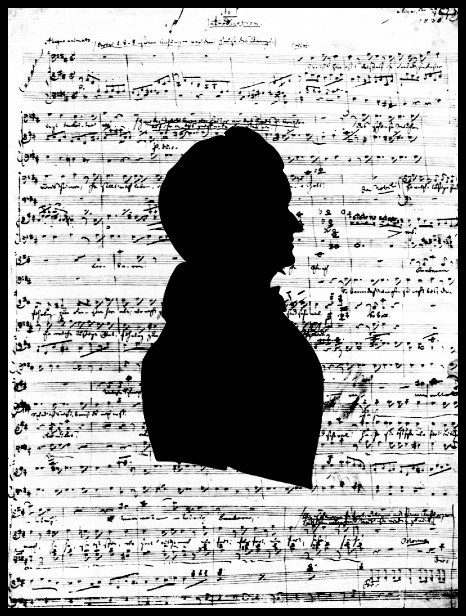
Silhouette of Richard Wagner, Magdeburg, 1835
I. INTRODUCTION
Erotic passion is a more dominant theme in Wagner’s operas than it is, for example, in Mozart’s oeuvre, where seduction, its charms and risks, is brought to the fore. Wagner presents a shared but impossible passion of which Tristan and Isolde is not merely an example but the thing itself. Here, the extreme tension produced by the conflict between desire and interdiction attains the sublime. But what is the sublime? In the first century a treatise attributed to Longinus, On the Sublime, defined sublimity as ‘a distinction and excellence in thought and expression’ that ‘elevates the soul’, enabling it to transcend its limits. Ancient rhetoric distinguished three categories of style: simple, temperate and sublime, the sublime being a style that exerts an irresistible force and emotion, distinguishing it from the lesser intensities of the other two styles.

Jeanne-Michèle Charbonnet (Isolde) | Richard Wagner, Tristan und Isolde, Grand Théâtre de Genève 2005 | Clifton Forbis (Tristan)
We will consider, within the framework of this definition, the extent to which Wagner’s oeuvre enables us to gain a deeper understanding of the sublime. Concurrently, we will examine what psychoanalysis has to say about the origin of the conflict between desire and interdiction. We shall draw on Wagner’s operas as well as his autobiography1, written in collaboration with Cosima2 who, for reasons of discretion, carefully suppressed any evocation of Wagner’s love, let alone his passion. The 800-odd pages of the book describe a man grappling with the composition of a gigantic oeuvre in which, at first, he alone believed. Relatively late in his career Ludwig II of Bavaria rallied to his cause, offering him generous financial support and extravagant friendship. It was Ludwig who commissioned the autobiography, a sweeping epic of a genius’ life.
1 – Richard Wagner, Ma vie (Paris: Perrin, 2012)
2 – Cosima, the daughter of Franz Liszt, was married to Hans von Bülow. She was Wagner’s mistress at the time he dictated the autobiography to her.
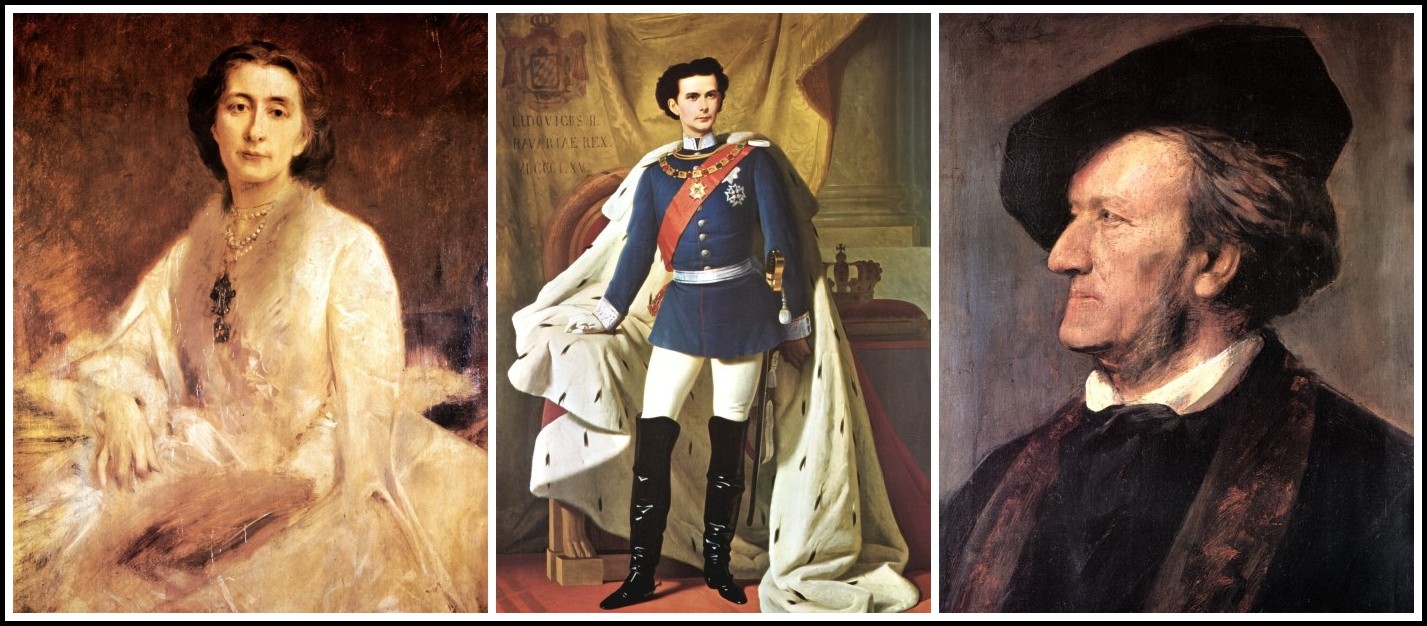
Franz von Lenbach, Cosima Wagner, 1879 | Ferdinand Piloty, Ludwig II, 1865 | Franz von Lenbach, Richard Wagner, 1871
Also useful in our investigation will be Nietzsche’s critique of Wagner, his erstwhile friend1 of whom he later wrote: ‘No one, perhaps, had been more dangerously entangled in Wagnerism, no one has defended himself harder against it, no one has been more glad to get rid of it. Is there a word for it? Perhaps “self-overcoming”.’2 Nietzsche’s rejection of Wagner was prompted by what he saw as the composer’s betrayal of the vital élan he had manifested during his period of rebellion but had now forsaken in favor of morality and religion. Nietzsche, in my view, is describing his own experience of Wagner more than any evolution in the composer’s oeuvre. Indeed, a consistent trait of Wagner’s work is the holding in tension of contradictory elements until a final resolution.
1 – Nietzsche’s relationship with Wagner was ‘the central relationship of his life, emotionally and intellectually’, writes Simon Callow in Being Wagner: The Triumph of the Will. (London: HarperCollins, 2017) p. 163 [Translator’s note]
2 – Nietzsche, The Case of Wagner, tr. Thomas Common (London: T. Fisher Unwin, 1899)
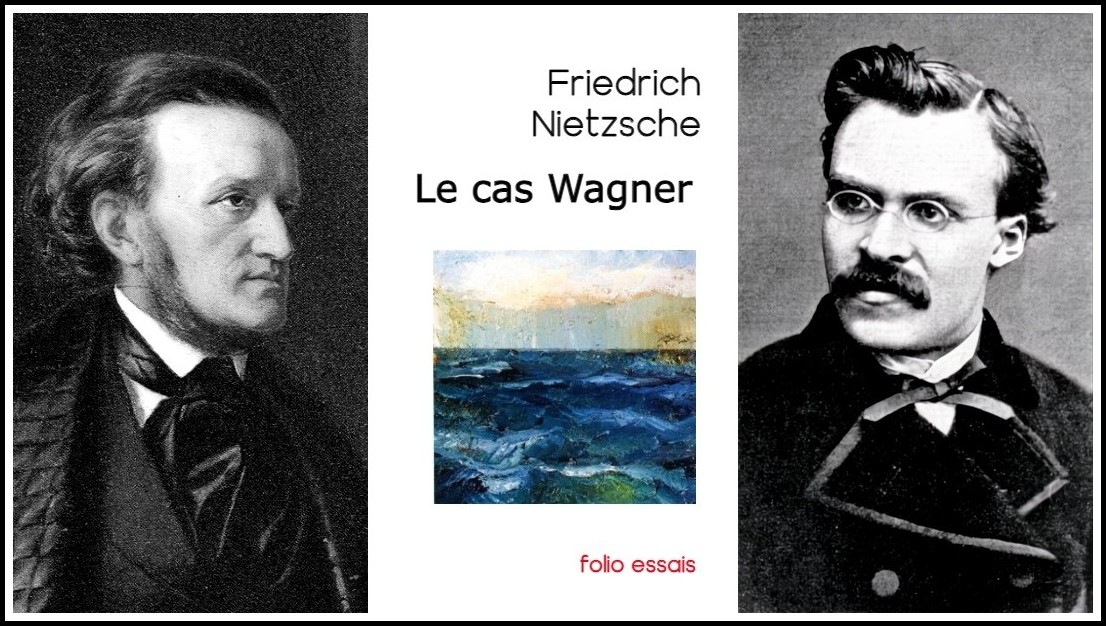
Richard Wagner | The Case of Wagner | Friedrich Nietzsche
II. A VOLUPTUOUS TERROR
Wagner was the seventh child in a set of siblings orphaned by the early death of their father. His childhood memories focus on the theatre, and above all on the fantastic impression made on him by Carl Maria von Weber’s Der Freischütz, especially the ‘Hunters’ Chorus’ that he first heard performed in the main square of Eisleben by the regiment of hussars stationed in the town. The phantasmagorical theme—a haunted forest—conjured anxiety and fascination in the child, causing him to wake up screaming many a night. Later, Wagner would often refer to this experience as if it were a touchstone of his wonder and emotion: ‘The feelings aroused by the horror and fear of ghosts became a major factor in the development of my emotional life. Ever since I can remember, certain inexplicable and troubling facts hold excessive sway over me’.
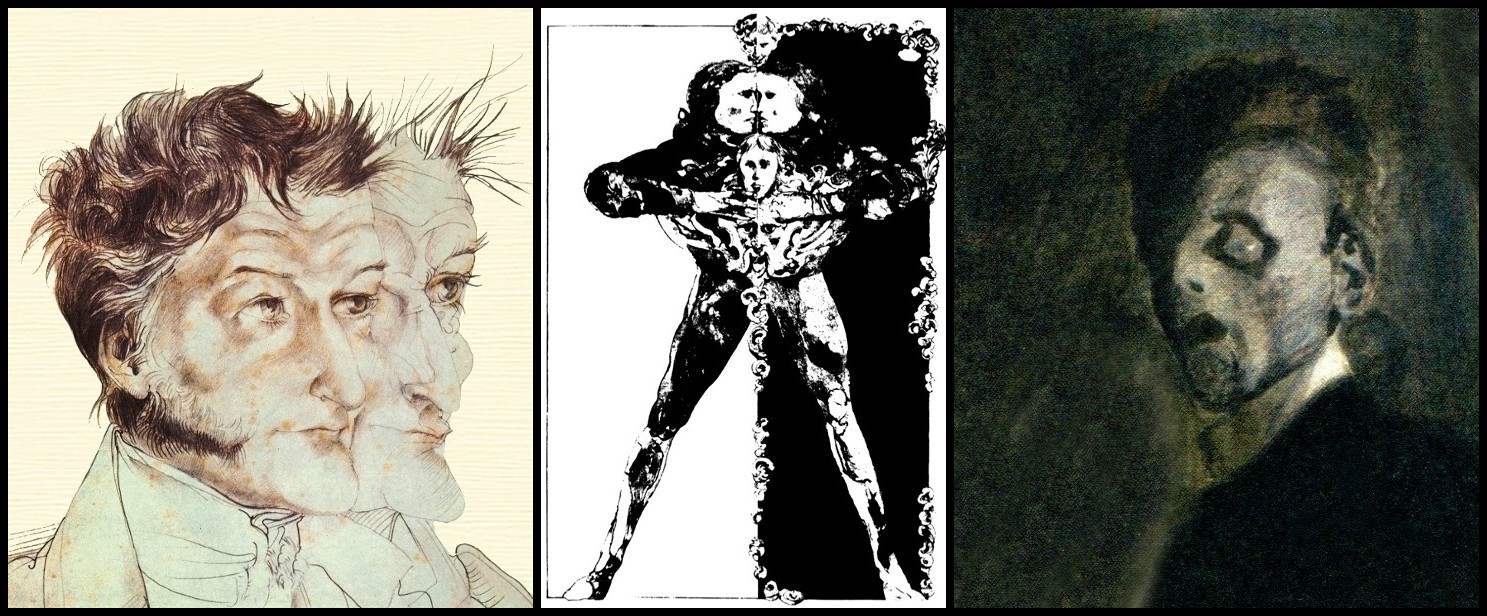
E.T.A. Hoffmann | Illustration by Jacob Landau for a book of Hoffmann’s tales | Léon Spilliaert, Self-Portrait in a Mirror, 1908 (detail)
This mixture of terror and the sublime became a major motif in Wagner’s inspiration, justifying Nietzsche’s critique of him as a hypnotist. Indeed, the philosopher likens the effect on his soul of Wagnerian orchestration to the exasperating sweat induced by the sirocco, and he reproaches the composer for resorting to the great stimulants of the decadents in his efforts at seduction, namely the brutal, the artificial, and the innocent.1 Furthermore, Nietzsche found in Wagner a feminine and adolescent sensibility that ‘requires the sublime, the profound and the overpowering’2. For him, the decadent musicians, and foremost among them Wagner, traffic in the chaos of emotions, forestalling all thought. In philosophical terms, far from producing the rigorous precision of a demonstration, these musicians exhibit the uncontrolled élan of Schwärmerei, the illusion that consists in believing one sees something imperceptible to the senses.
1 – Nietzsche, The Case of Wagner, tr. Thomas Common (London: T. Fisher Unwin, 1899)
2 – Ibid.
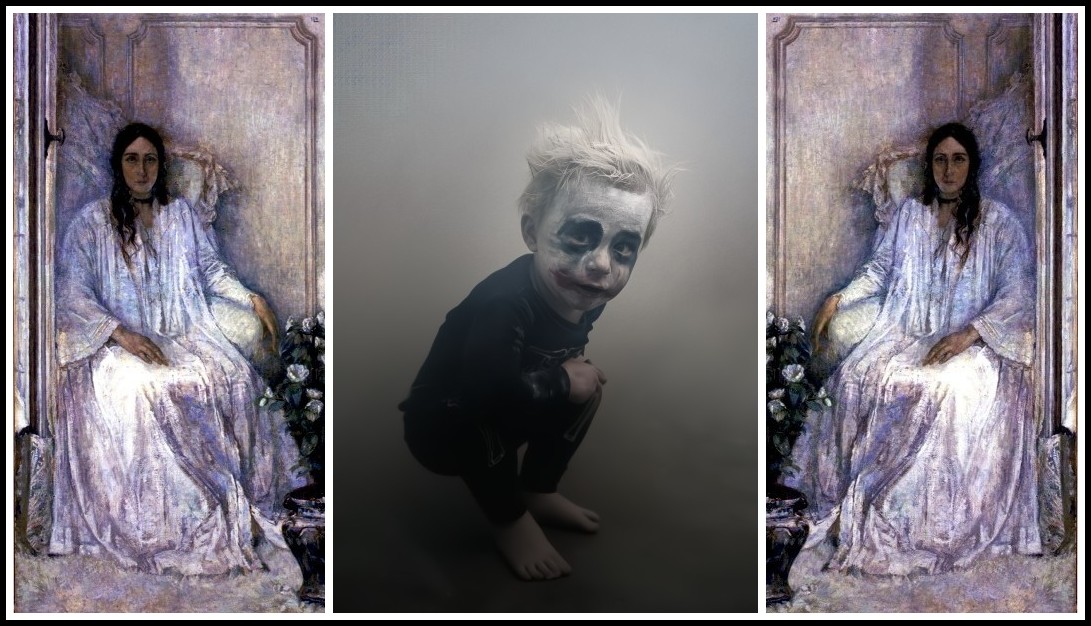
Frédéric Lottin, Réminiscence, 1904 | Zachary Kadolph, Unsplash
The sublime is not sublimation,1 since unlike sublimation, it conducts the drive towards full development. Indeed, to the extent that the sublime is bound to the ineffable and its only outlet is mystical, it is the opposite of sublimation. Is not art, however, allowed to venture into areas that philosophy considers unfit for itself? For his part, Wagner, out of what might have become a pathological phobia, developed an oeuvre. The massive orchestral swells of the Der Freischütz Overture, he tells us, transported him body and soul into the enchanted world of terror. Later, it was the open fifths played pianissimo by tremolo strings at the beginning of Beethoven’s Ninth Symphony that reminded him of the sounds that played a supernatural role in his childhood. As if suffering from hallucinations, he speaks of a ‘fundamental tone that haunted my life’. He goes on to say that after a night spent copying the score of the Ninth, dawn found him in such a state of nervous agitation that he was struck with terror and began screaming as if he had seen a ghost.
1 – See Sophie de Mijolla-Mellor, Le choix de la sublimation (Paris: PUF, 2009)
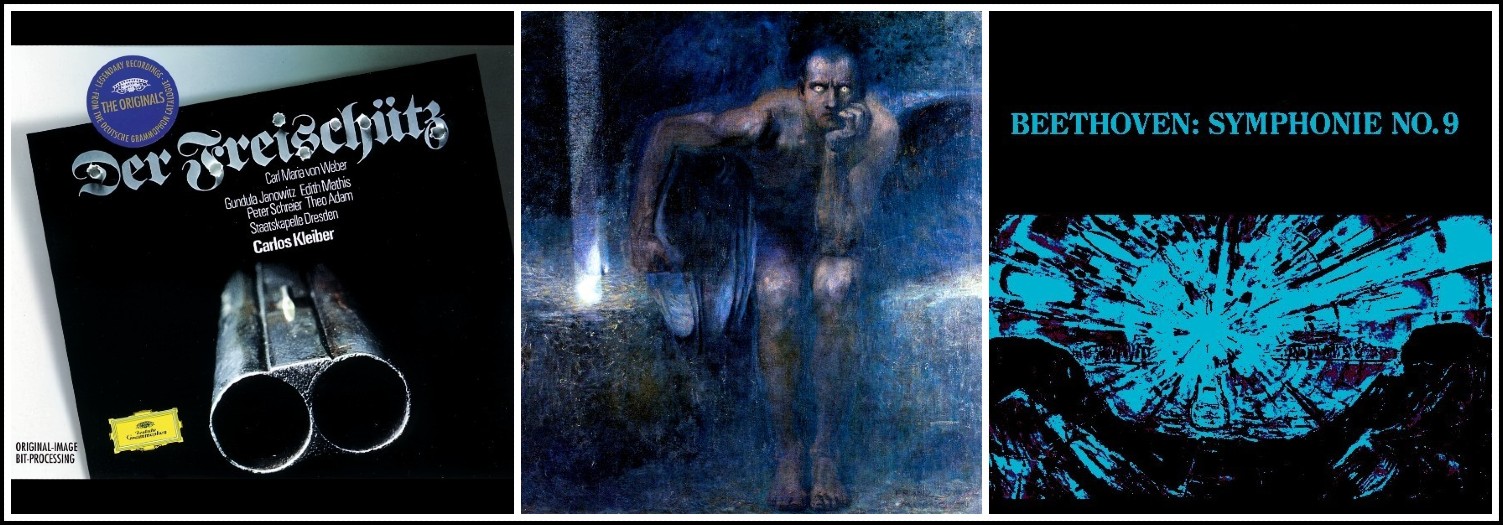
Carl Maria von Weber, Die FreiSchütz, 1821 | Franz von Stuck, Lucifer, 1891 | Beethoven, Symphony No. 9, 1824
A psychoanalyst would be tempted to ascribe Wagner’s fascination with ghosts to the premature death of his father. We find the same fascination in his adolescent obsession with Hamlet. Indeed, the boy wrote a play where the hero, unafraid of action, assassinates everyone. In fact, Wagner lost two fathers. The first, his biological father, died when the baby was six months old; the second, his stepfather, when the boy was fifteen. The stepfather, a musician, greatly influenced his stepson. Indeed, the young Wagner saw him as a Pygmalion-figure, revealing the world of culture, and in particular the great tragedians, to him.
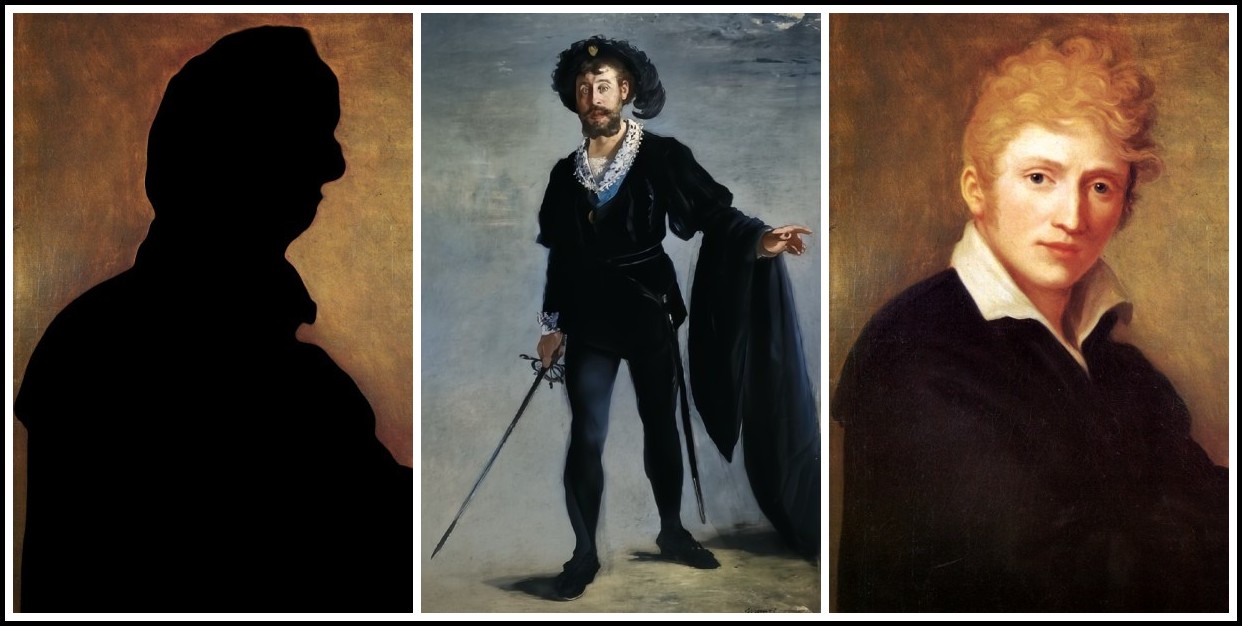
Richard’s father, Carl F. W. Wagner (1770-1813) | Manet, Faure dans le rôle d’Hamlet, 1877 | Richard’s stepfather, Ludwig Geyer (1779-1821), Self-Portrait
Beyond the presence of his stepfather, Wagner, surrounded by his mother and sisters, grew up in a world of women. Speaking of his mother’s role in his life, he wrote: ‘What influenced me most was the strange zeal with which she expressed, in almost pathetic tones, her ideas about the beautiful and the sublime in art.’ His mother might also have exerted a religious influence on him. Of this he kept only the mysticism, which, from early on, he mixed with his passion for Greek mythology. Did Wagner, in writing of this, want to pre-interpret for the royal reader of his autobiography the psychological links between his childhood and his work? Perhaps.
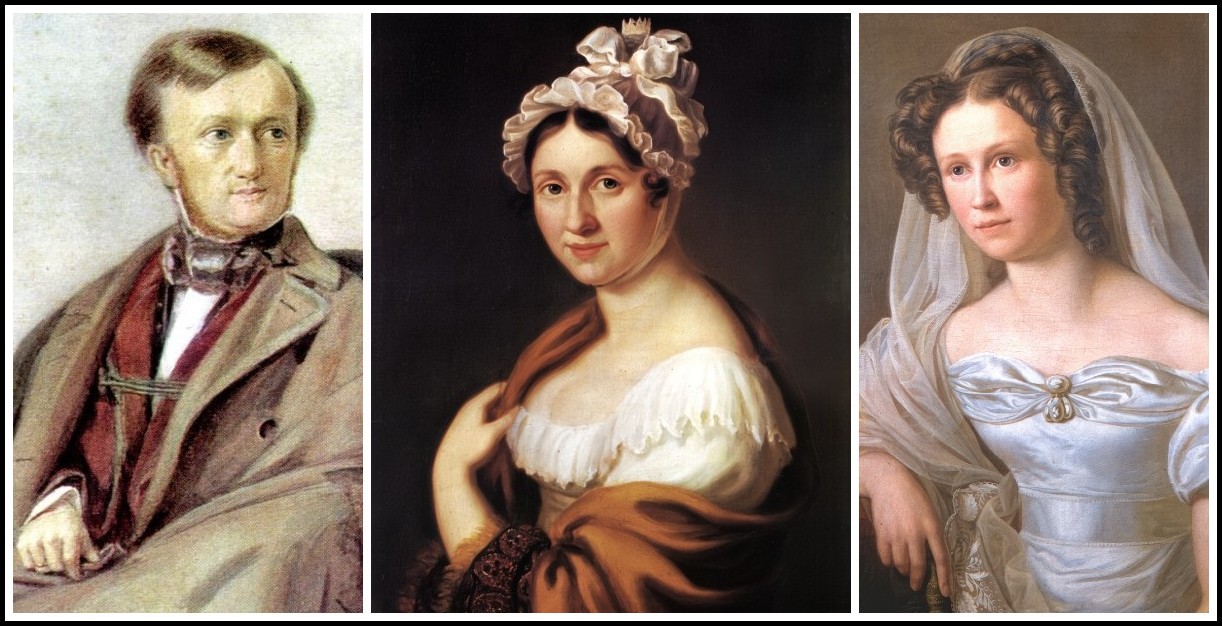
Clementine Stockar-Escher, Richard Wagner, 1853 | Ludwig Geyer, Johanna Rosine Wagner, Richard’s mother | Rosalie Wagner, Richard’s eldest sister
III. THE REBELLION
Like the characters in his operas, Wagner was himself rebellious, upholding his intuitions irrespective of reality. This rebellion against the established order is consistent with his position as (almost) the youngest child in the family. It also has to do with his certitude that his sisters, in particular the eldest, the beloved Rosalie, would protect him. Indeed, he perceived Rosalie as a strong woman, maternal and generous, under whose protection he could do as he liked.
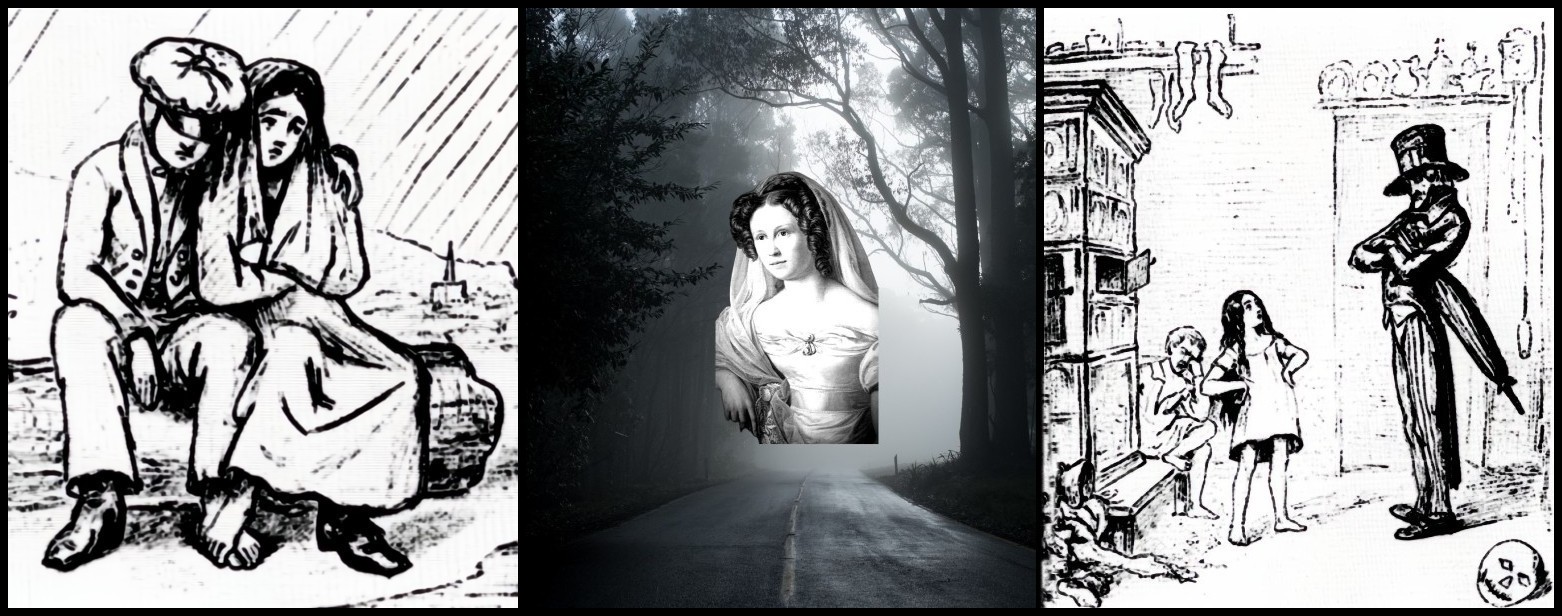
Richard Wagner and his stepsister Cäcilie in drawings made by Ernst Benedikt Kietz from Wagner’s evocations of his childhood1 | Rosalie watching over Richard
1 – Walter Hansen, Richard Wagner: Sein Leben in Bildern (Deutsche Taschenbuch Verlag, 2007) pp. 12-13
Supportive men, Wagner tells us, were also prominent in his adolescence. After his stepfather, it was his uncle Adolf Wagner who encouraged his cultural development and supported him in his disdain for classroom pedantry.
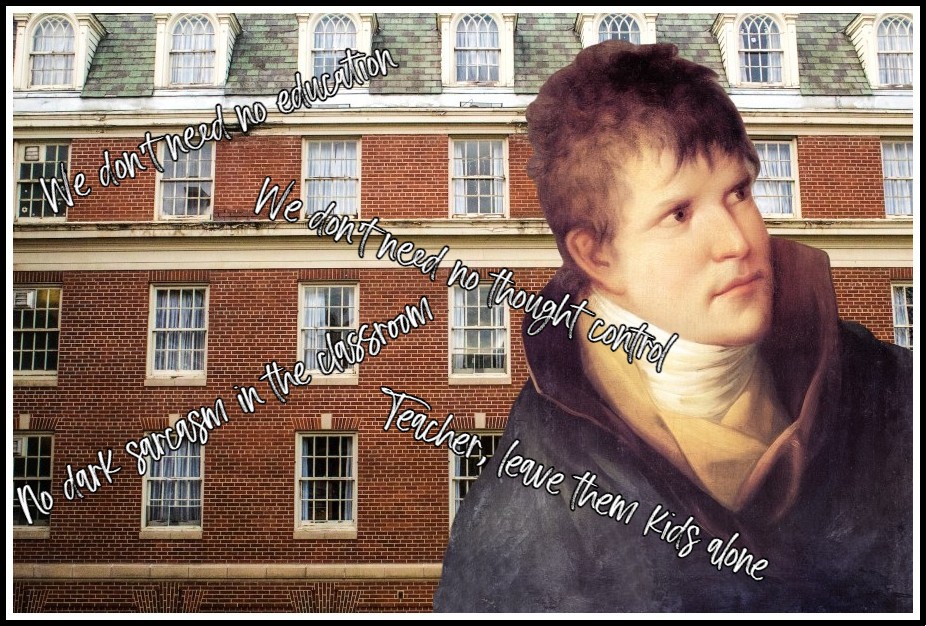
Adolf Wagner (1774-1835) | Photo of school: Bailey Granneman, Unsplash
Doing so only for the ‘glory’ of acquiring the status of ‘university student’, Wagner belatedly sat his university entrance exams. He did not attend classes. Instead, firmly believing in his poetic vocation, he undertook extravagant projects, attempting, for example, to write dramatic works in the vein of Shakespeare, Goethe and Dante.
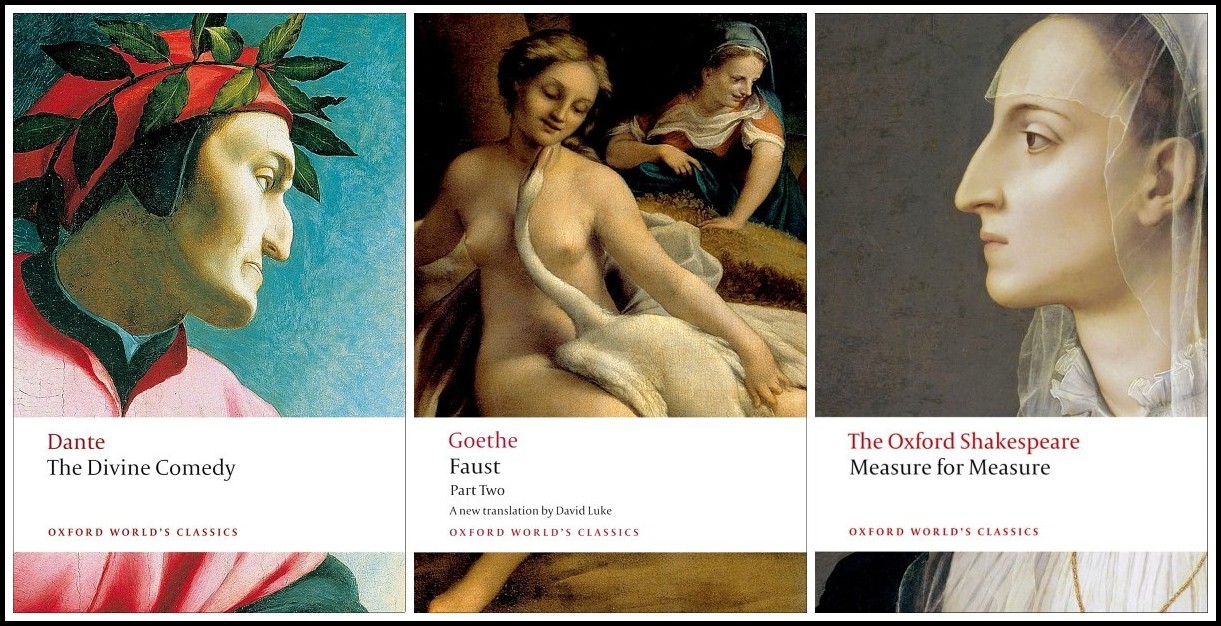
Dante, Goethe, Shakespeare
One must remember that in Wagner’s work, writing (words) comes first and composition (music) after. Confident in his self-taught certitudes, the composer-to-be bought himself a manual of composition. Why did he believe he had the capacity to create when nothing and no-one gave him reason to believe it? In fact, it was the force of his phantasy that demanded he respond to it,1 and the emotion that ‘carried him away’ was what he would put into words and then into music. These ‘visions’ could also arise when listening to music. We’ve seen Wagner’s fascination with Weber, but Beethoven fascinated him just as much. Indeed, Wagner claimed that it was thanks to Beethoven’s ‘Adelaïde’, a charming if slight lied, that he discovered the ‘invocation of love’. In contrast, he found Mozart’s piano adaptation of Don Giovanni ‘frivolous, futile and lacking in virility’, and it was only thanks to the Requiem that he ‘admitted Mozart into his spirit world’, a world that could not fail to please its protector, given to creating semblances of himself.
1 – Just as it would continue to do in everyday situations, such as the sight of a wild landscape discovered during a journey by mail-coach.
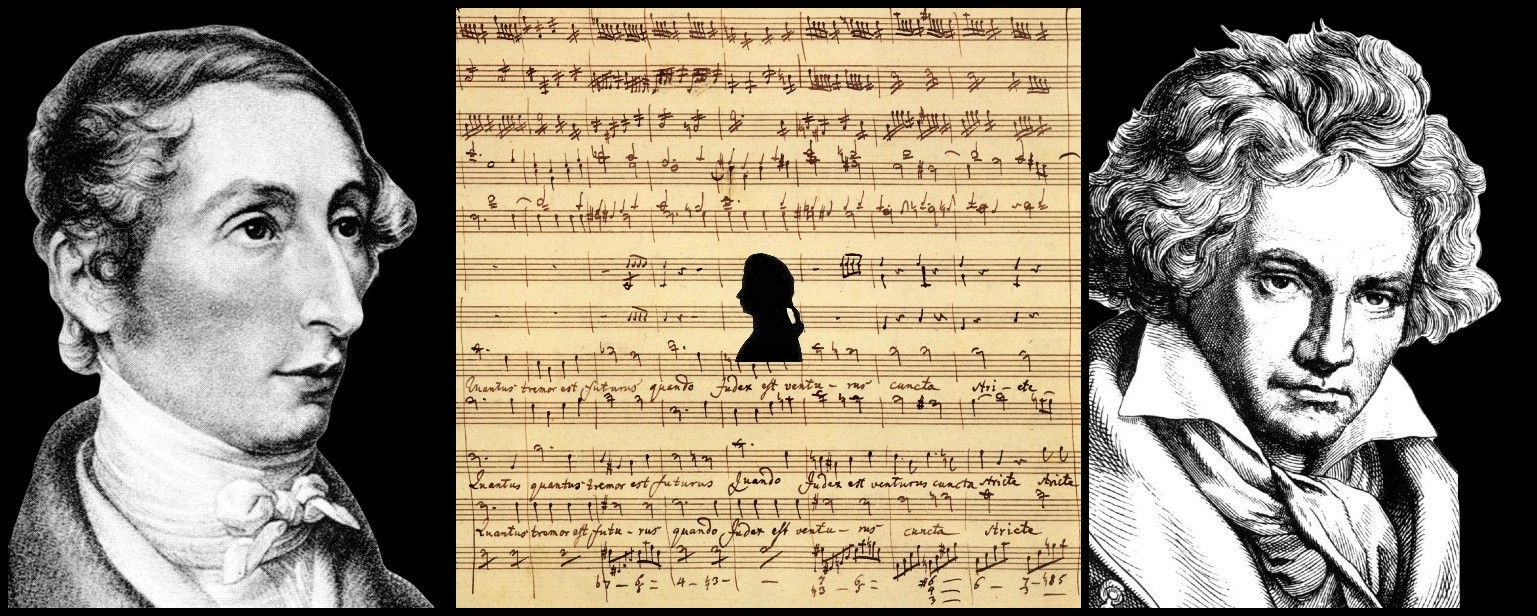
Carl Maria von Weber | Mozart, Requiem, first page of the ‘Dies irae’, copy dated 1792 | Beethoven
During his adolescence, Wagner’s rebellion derived from his incapacity to find at school the intellectual sustenance his phantasies demanded. His rebellion was characterized by an immense self-confidence that went hand in hand with a propensity for self-instruction. This propensity, it seems, did not have the pre-paranoid dimension that often accompanies it, since Wagner’s concern was not with constructing explanations but with capturing the chaos of real-life experience. Mastering an instrument was not his concern, since composing does not require it. As for music theory, its dryness put him off. Nevertheless, without any teaching, Wagner composed fantasies, sonatas and overtures.
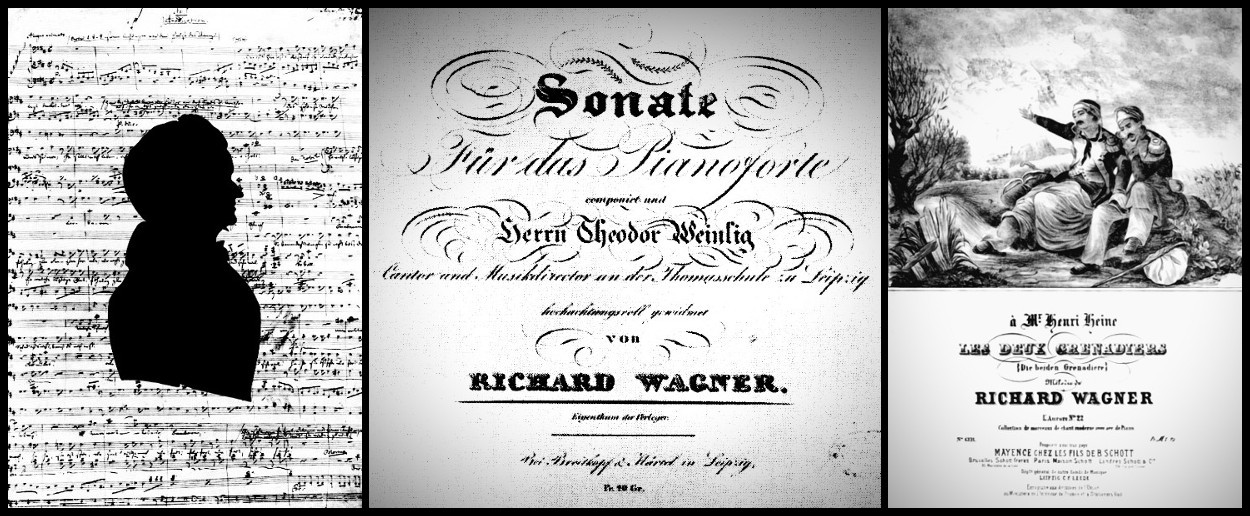
Wagner silhouette,1 Magdeburg, 1835 – Rienzi, Riga, 1838 | Wagner’s student composition, Piano Sonata in B major, 1831 (performed) 1835 (published)2 | Wagner, Les deux grenadiers, Paris.3
1 – This is the earliest known ‘portrait’ of Wagner. See Martin Gregor-Dellin, Richard Wagner: Eine Biographie in Bildern (München & Zürich: Piper Verlag, 1982) p. 46.
2 – Ibid. P. 34
3 – Ibid. p 53: ‘Wagner tried to earn income in Paris from setting French poems to music. He had ‘Les deux grenadiers’, based on Heine, printed for 50 francs at his own expense. It was all in vain.’
Wagner, seventeen at the time of the July Revolution in France in 1830, writes in My Life: ‘For me, history came into being at that time. Of course, I was on the side of the Revolution, which I saw as the courageous struggle of a people fighting victoriously, without tainting themselves, against the excesses of the first French Revolution’. He composed a ‘Political Overture’ and, even though he was not a student, took part in the student uprising in Leipzig.
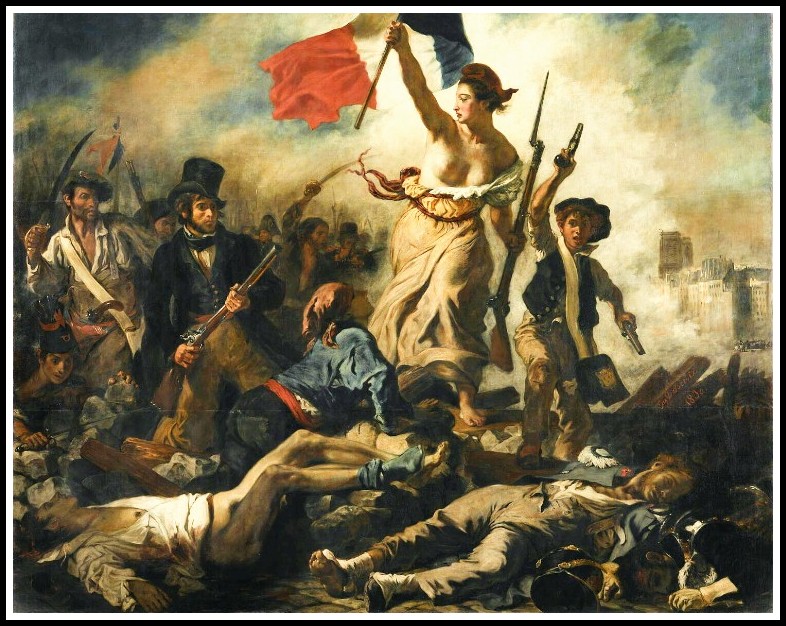
Eugène Delacroix, Le 28 juillet 1830 – La Liberté guidant le peuple, 1830
Soon after, the students were enrolled as an irregular force to fight against a workers’ uprising. Wagner took pleasure in the destructive rage of the rebels, determined as they were to enjoy their power while it lasted. He wrote that one of his models of insubordination and bravery was ‘a desperado straight out of the Nibelungen’.
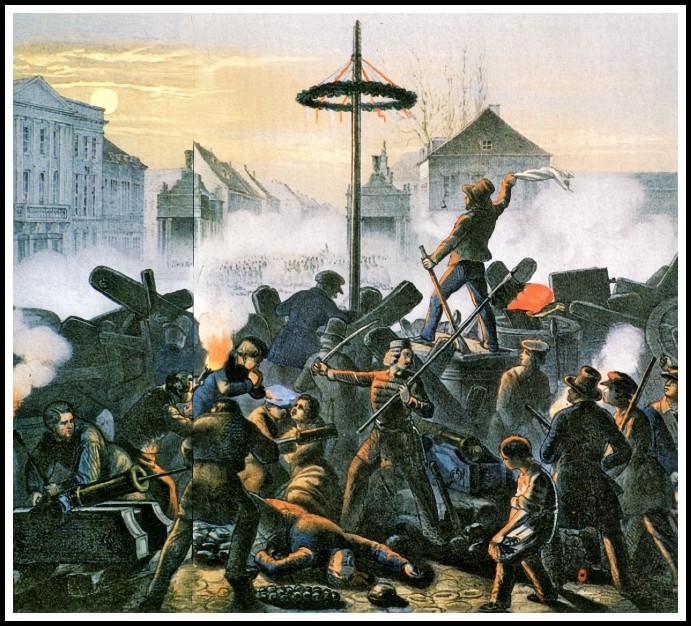
Prelude to the German Revolution: Manning the Barricades in Berlin, 1848
Wagner himself continually engaged in the traditional saber duels between competing student societies, this being a primary reason for his becoming a student.
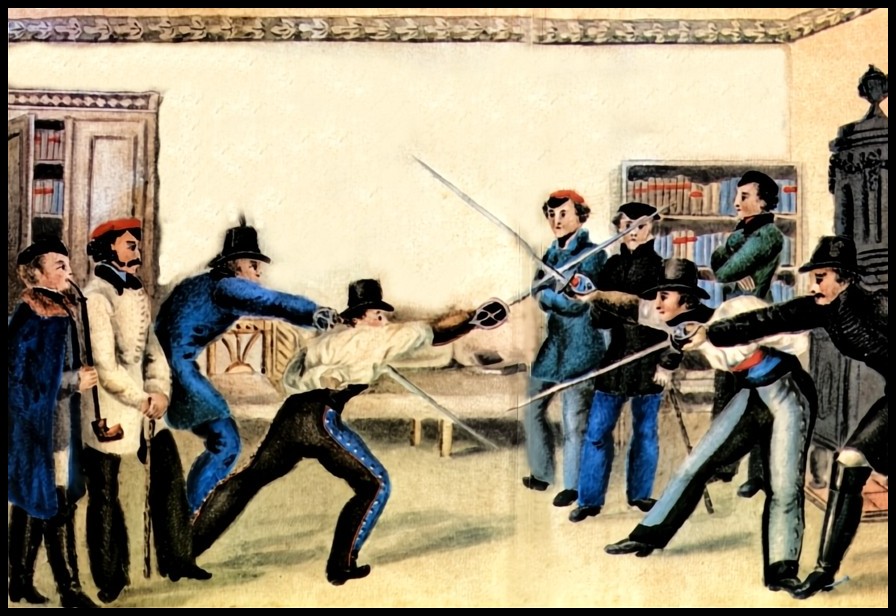
Sabre Duelling between Student Societies
Like Verdi’s music, Wagner’s has a significant political dimension. Indeed, each composer endeavoured to interpret the ‘soul of his people’. In 1848 Europe experienced an upsurge of nationalism as country after country was swept by a wave of revolution. Nationalism, no doubt, was also what Wagner found in Weber’s Der Freischütz, an opera that even today every German recognizes as characteristic of the German soul. Wagner’s political writings date from 1849, the year in which he published Art and Revolution. In the same year, he fled to Switzerland, with Liszt’s help, to escape political imprisonment. In 1861, in Paris, he withdrew his Tannhäuser from the stage after suffering a wave of booing orchestrated by, among others, Meyerbeer’s friends: they were seeking revenge for Wagner’s anti-Semitic essay, ‘Jewishness in Music’.
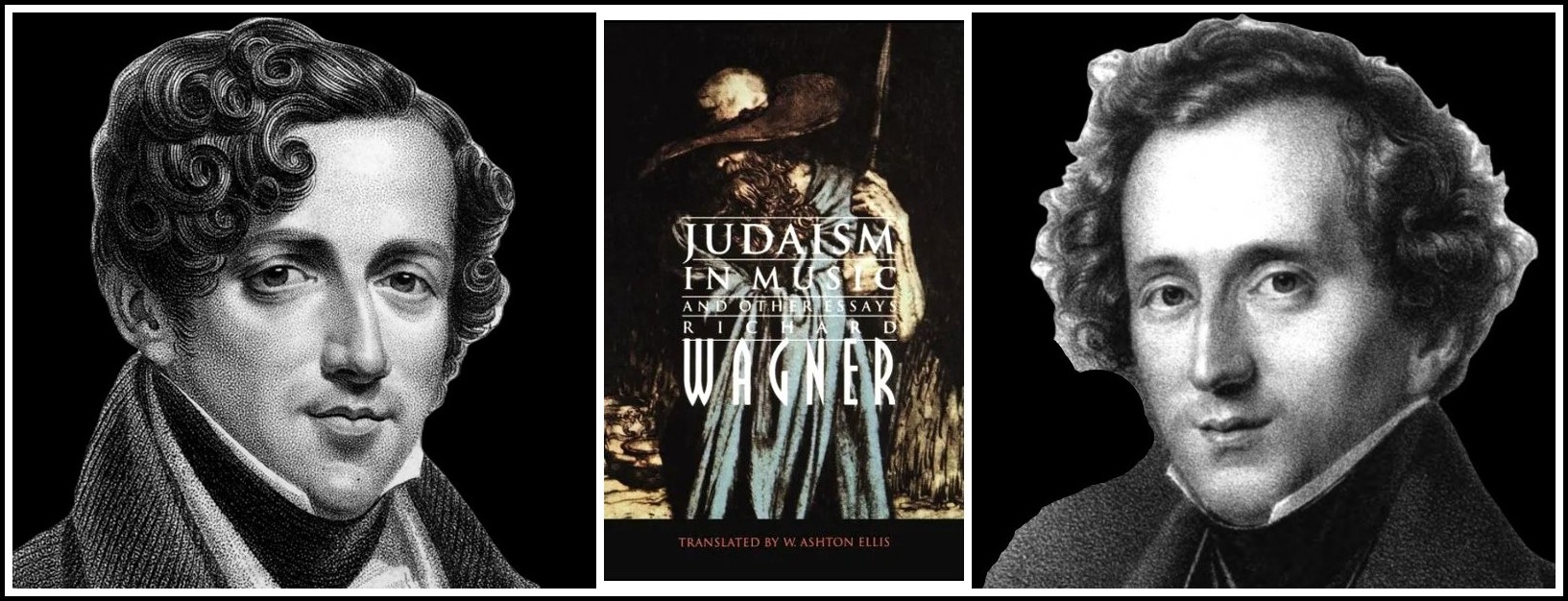
Giacomo Meyerbeer | Richard Wagner, Judaism in Music, 1850/1869 | Felix Mendelssohn
The passion that Hitler would develop for Wagner could thus embrace not only Wagner’s anti-Semitism but also his specifically Romantic and German phantasmagorical intensity, as far from the solar light of Mozart’s Italy as from Nietzsche’s ‘joyous science’.
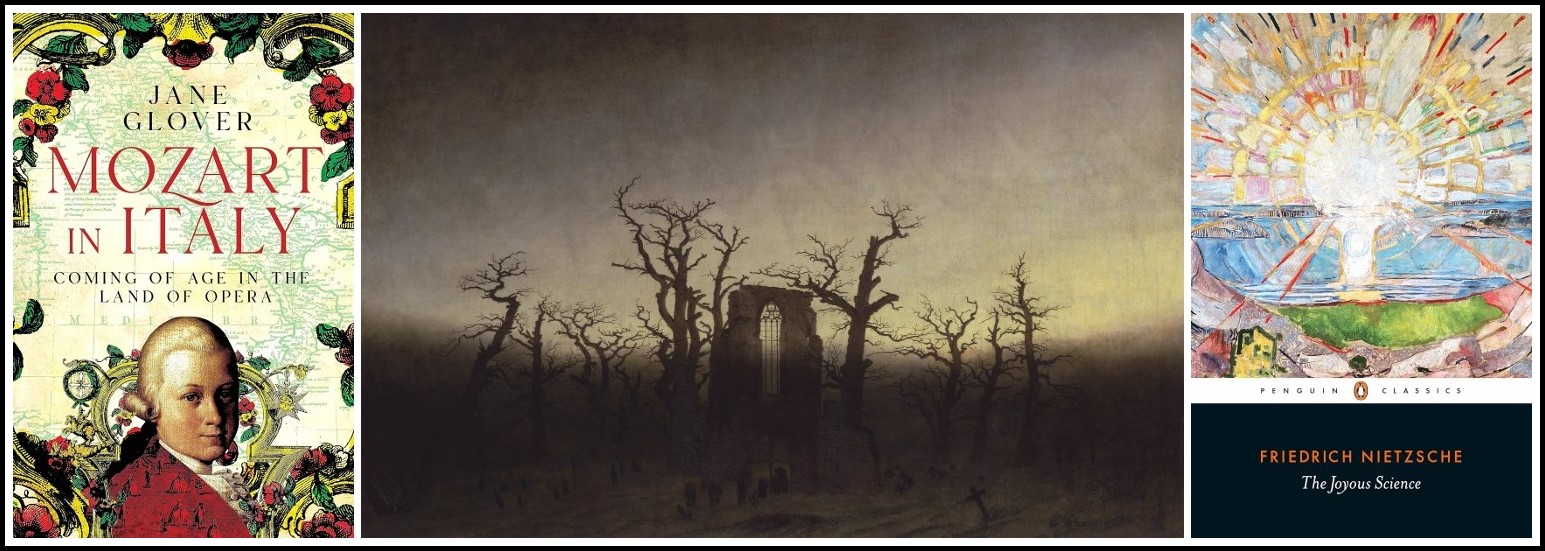
Jane Glover, Mozart in Italy | Caspar David Friedrich, Abbey among Oaks, 1810 | Nietzsche, The Joyous Science
IV. THE PASSION*
The event that enraptured Wagner and sparked the creation of his masterwork, Tristan and Isolde, is his encounter with Mathilde Wesendonck. Both of them were married—he to Minna (Christine Wilhelmine Planer) and she to an admirer and benefactor of Wagner, Otto Wesendonck—making it all but impossible to conduct a romance. Mathilde, given to listening to Wagner ‘like Brünnhilde listened to Wotan’, would be initiated into art and philosophy (Schopenhauer) by he who was fifteen years her senior. Wagner also set some of Mathilde’s poems to music.
* ‘It is hard to resist being seduced by the accents of passion. It sweeps away the misery of uncertainty and the dullness of boredom with its convictions that self-present as irrefutable, verities beyond the reach of reason. The adolescent that abides in us is always reader to believe that, as Hegel put it, ‘nothing great can be accomplished without passion’. Clinical practice, in contrast, distances us definitively from romanticism and its fatal affirmations by revealing, behind the very real drama of passion, the infantile conflicts and the attendant suffering that endure, displaced and unrecognizable, in the adult. If the ability to harness libidinal energy and to keep it focused on a goal is indeed necessary to accomplish anything, great or not, it is not the distinguishing feature of passion. Like a will-o’-the-wisp, obscure in origin, passion consumes itself in the place it appears, sterile but ever-ready to be reborn, free of memory and without a future.’ Sophie de Mijolla-Mellor, from her article ‘Le phénomène passionnel’ in Dialogue (n°100, 2e trimestre 1988) pages 48-59. Translated here by Richard Jonathan. [Translator’s note]

Minna & Richard Wagner | Otto & Mathilde Wesendonck
Out of the distress of this impossible love would arise the sublime sensuality of Tristan and Isolde. How different from the religion of renunciation to which, years later, Parsifal would give expression!

Jeanne-Michèle Charbonnet & Clifton Forbis, Tristan and Isolde, 2005 | Jonas Kaufmann & Katarina Dalayman, Parsifal, 2013
Wagner, in fact, had always lived with passion. Adolescent and somewhat psychopathic, for a time he was given to brawling and addicted to gambling.1 He would pull through in the way a passion addict typically does: as if a switch had been flipped, making it impossible to understand what charm one might have found in the former objects of passion. Wagner: ‘Temptation no longer had a hold on me. The society into which vertigo had drawn me suddenly seemed incomprehensible and colorless to me; the passion for gambling had made me perfectly indifferent to the usual student vanities. Freed of this passion, I suddenly found myself facing a new world’. For all that, however, Wagner did not become a puritan. Instead, his passion changed objects: his focus shifted to writing a libretto and composing a score. He aimed to reveal ‘the immorality of hypocrisy and all that is unnatural in the rigidity of moral laws’.
1 – He once staked his mother’s pension, which, lost, luck alone allowed him to recover.
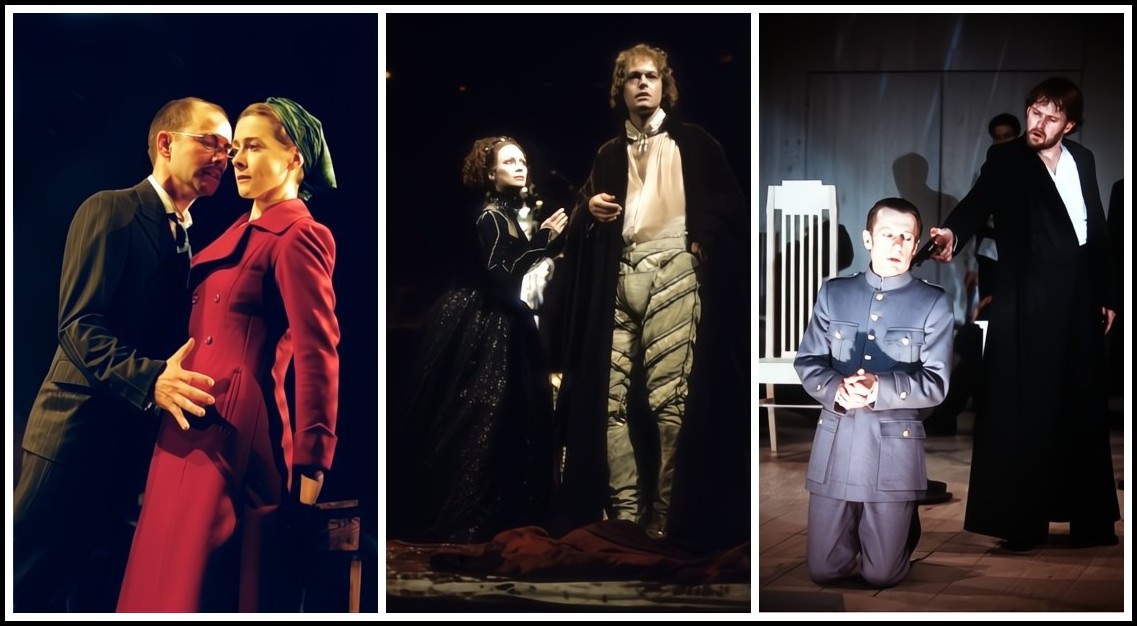
‘To reveal the immorality of hypocrisy and all that is unnatural in the rigidity of moral laws’
Shakespeare’s Measure for Measure, the basis of Wagner’s Das Liebesverbot [Translator’s note] | Images: Royal Shakespeare Company
‘The immorality of hypocrisy and all that is unnatural in the rigidity of moral laws’: that is precisely the denunciation we find in, for example, the dialogue between Wotan and Fricka in Act II of Die Walküre. The hero, Wotan’s illegitimate son Siegmund, is set to fight Hunding, who is pursuing him. He is on the run with his twin sister Siegelinde, who had been kidnapped and forced to marry Hunding. The twins, narcissistically fascinated with each, have fallen in love. Wotan praises this incestuous love in the face of his wife’s anger. She, goddess of marriage, takes Hunding’s side and demands that Siegmund die. To Fricka, his lawful wife, Wotan retorts: ‘Unholy I deem the vow that binds unloving hearts.’ We thus find in Wotan, god of war and treaties, the same passion as that found in the psychopathic adolescent, Wagner.

Christine Hansmann (Fricka) & Renatus Mészár (Wotan) | Wagner, Die Walküre, Staatskapelle Weimar 2008
Wotan engendered Siegmund in order to produce a human being who would be a hero ‘free from all divine protection and emancipated from the laws of the gods’. With nothing to hold him back, he would have the courage to steal from Fafner the ring that Wotan had given the giant in exchange for Valhalla. The hero had to ‘have nothing to do with the gods, be indifferent to their favors, reckless, not subject to any order’. Without retracing the entire story, we recall that the ring Wotan gave Fafner, forged by Alberich with gold from the Rhine obtained in exchange for renouncing love forever, was stolen from Alberich by Wotan. In order to recover the ring that the gods cannot because they remain bound by their contracts, a new being is needed who is not restrained by any treaty. When it comes to revolt, then, we see that the father expects, for his own advantage, his ‘free’ son to recover the ring. Fricka, determined to disrupt this plan, recalls that the son owes everything, including his courage, to the father. The son, she asserts, is only an emanation of the father, he has no existence in his own right. As she tells Wotan, ‘In him I find only you; what he does, he does through you’.

Christine Hansmann (Fricka) & Renatus Mészár (Wotan) | Wagner, Die Walküre, Staatskapelle Weimar 2008
Brünnhilde, too, will not fulfill her father Wotan’s will. Fricka’s arguments prevail. She forces Wotan to face up to his solitude, which is absolute since nothing exists outside him. She convinces him to side with the established order and to support the divine power she represents. Addressing Brünnhilde soon after this episode, Wotan speaks of the state of aporia he finds himself in:
O, how shall I find
or shape me the free one, by me ne’er shielded,
in his firm defiance the dearest to me?
How fashion the Other who, not through me,
but from his will for my ends shall work?
In loathing find I ever myself
in all my hand has created;
the Other whom I have longed for,
that Other I ne’er shall find:
himself must the free one create him;
my hand nought shapeth but slaves.
It is indeed here that the figure of the hero (heroine) comes into play: he (she) must be passionately loved by the father who sees in him (her) his own youth; at the same time, he (she) must free himself (herself) from paternal tutelage, betray the father and affirm his (her) own freedom.

Renatus Mészár (Wotan) & Catherine Foster (Brünnhilde) | Wagner, Die Walküre, Staatskapelle Weimar 2008
Brünnhilde goes even further. Captivated by the courage of Siegmund, she unconsciously takes Wotan’s love for his son upon herself. She will therefore disobey the father and rebel against his power, while protecting Siegmund, his sister/lover, and their unborn child. In so doing, she—a heroine in love with a hero while expressing the father’s love for his son—breaks the bond that fusionally binds her to her father:
In her deeds my desires were born to the day:
our holy bond she hath now so disdained
that, faithless, she my own will hath defied,
my sacred command openly scorned,
against me she lifted the spear
that by Wotan’s will she bore!
Wotan, reproaching her for not having understood his distress and solitude, pronounces her sentence.1
1 – ‘Valkyrie you are no longer / What you are is henceforth only what you are’. To magic sleep upon a mountain she is banished, protected only by a circle of fire. [Translator’s note]

Renatus Mészár (Wotan) & Catherine Foster (Brünnhilde) | Wagner, Die Walküre, Staatskapelle Weimar 2008
Heroes, however, can also be desperadoes, fearing neither god no man. Even Siegfried, who presents himself as the perfect hero, comes to a bad end. His fearlessness in the face of danger, far from being a sign of courage, is mere recklessness. In Twilight of the Gods, he abandons his beloved to another man by resorting to a vile subterfuge, thus participating in the general de-idealization that, except for the character of Brünnhilde, characterizes the Ring.

Richard Wagner, Götterdämmerung, Staatskapelle Weimar 2008
Catherine Foster (Brünnhilde), Norbert Schmittberg (Siegfried), Marietta Zumbült (Gutrune), Mario Hoff (Gunther)
V. THE CHOICE OF DUTY AND REDEMPTION
How does Wagner typically resolve the oedipal conflict in his operas? The ‘twilight of the gods’ gives way to the victorious figure of the Redeemer, while devotion—’narrow-minded, duplicitous and extreme’,1 as Nietzsche describes it—relegates erotic passion to concupiscence and the base instincts. In The Rheingold, Alberich, having been mocked by the naiads, renounces love for power and gold. Sanctified by religion, the situation recurs in the triad of Tannhäuser, Lohengrin and Parsifal. In Tristan and Isolde, the choice is between loyalty to the paternal figure of the King and seduction of the woman who is to become his bride. Passion in Wagner is above all a scenario in which jouissance2 drives one mad: only a young woman in a sisterly role can offer a way out. The violent passion of a mother for a son and a son for a mother—that is what is to be sacrificed.
1 – This is a translation of cagoterie, a French term Nietzsche borrowed from Voltaire. [Translator’s note]
2 – Jouissance, as defined by Dylan Evans in An Introductory Dictionary of Lacanian Psychoanalysis (Routledge, 2001) pp. 91-92: The pleasure principle functions as a limit to enjoyment; it is a law which commands the subject to ‘enjoy as little as possible’. At the same time, the subject constantly attempts to transgress the prohibitions imposed on his enjoyment, to go ‘beyond the pleasure principle’. However, the result of transgressing the pleasure principle is not more pleasure, but pain, since there is only a certain amount of pleasure that the subject can bear. Beyond this limit, pleasure becomes pain, and this ‘painful pleasure’ is what Lacan calls jouissance; ‘jouissance is suffering’. The term jouissance thus nicely expresses the paradoxical satisfaction that the subject derives from his symptom, or, to put it another way, the suffering that he derives from his own satisfaction. The very prohibition of jouissance (inherent in the symbolic structure of language and in the Oedipus complex/the incest taboo) creates the desire to transgress it, and jouissance is therefore fundamentally transgressive. The death drive is the name given to that constant desire in the subject to break through the pleasure principle towards the thing and a certain excess jouissance; thus jouissance is ‘the path towards death’. Insofar as the drives are attempts to break through the pleasure principle in search of jouissance, every drive is a death drive. There are strong affinities between Lacan’s concept of jouissance and Freud’s concept of the libido, as is clear from Lacan’s description of jouissance as a ‘bodily substance’. [Translator’s note]

Jeanne-Michèle Charbonnet (Isolde), Clifton Forbis (Tristan), Alfred Reiter (King Mark) | Richard Wagner, Tristan and Isolde, Grand Théâtre de Genève 2005
Herzeleide, Parsifal’s mother, is described thus: ‘A mother inconsolable for the loss of her beloved husband’. (Recall the premature death of Wagner’s father and the fact that Wagner readily speaks of maternal violence.) The description of Herzeleide continues: ‘Her life was one of perpetual worry, an endless anxiety for her child’. Kundry to Parsifal: ‘When she clasped you to her in fury, did you not fear her very kisses?’

Katarina Dalayman (Kundry) & Jonas Kaufmann (Parsifal)| Richard Wagner, Parsifal, Metropolitan Opera 2013
In Tannhäuser, Wagner made things even clearer, thanks to the transformation of his mother into Venus. Indeed, the magnificent first act can be understood as the prayer of a seduced adolescent who attempts to escape the deadly, infinite jouissance that would have him remain with his mother forever: ‘The time that I have been here no longer can be measured; daytime, night-time, mean no more to me. So from your Kingdom must I flee; from endless love, Goddess, set me free!’

Marina Prudenskaya (Venus), Peter Seiffert (Tannhäuser), Hwanhee Hwang (dancer/bacchante) | Richard Wagner, Tannhäuser, Staatskapelle Berlin 2014
In the same way that a child seduced by an adult remains a child, Tannhäuser loved by Venus remains a human being: the eternal jouissance of the gods is not accessible to him. Indeed, as a mortal, he is subject to change, meaning that, like a child, he has to grow up. Here, there is no conflict, only Tannhäuser’s desperate effort to tear himself away from the unbridled jouissance that enslaves him: ‘My life with you in slavery shames me; for freedom, yes, my senses yearn; for freedom, freedom, still I burn. The world waits there to be explored, even though death be my reward; so from your Kingdom must I flee’. This is a narcissistic choice and, in adolescence, a necessary one. It often takes on a masochistic dimension: ‘I long for new experience; your love is not enough. It is death I am seeking, and death that draws me on.’ Thus sings he who is fleeing Venus and the ‘sublimity of her charms’.

Marina Prudenskaya (Venus) & Peter Seiffert (Tannhäuser) | Richard Wagner, Tannhäuser, Staatskapelle Berlin 2014
For Tannhäuser, puritan that he is, carnal pleasure is always provoked by some sort of magic. No sooner has he left Venusberg, however, then—competing against the knights to whose band he once belonged—he defends ‘true’ love in a very Platonic song contest whose theme is ‘the nature of love’. Wolfram defines ‘pure love’ as ‘sublime’:
And behold! Before me a miraculous spring appears,
which my spirit glimpses, filled with wonder!
From it, it draws bliss, rich in grace,
through which, ineffably, it revives my heart.
And never would I sully this fount,
nor taint the spring in wanton mood:
I would practice myself in devotion, sacrificing,
gladly shed my heart’s last drop of blood.

Ann Petersen (Elisabeth) & Peter Mattei (Wolfram) | Richard Wagner, Tannhäuser, Staatskapelle Berlin 2014
Opposing that view, Tannhäuser alludes to his Venusberg experience:
I cannot approach this source
without feeling wild desire,
I must cool a burning thirst
and with my lips satisfy it.
In long drafts I draw pleasure
and will not tremble at the sight,
for just as endless as its wonders
is my desire for its delight

Ann Petersen (Elisabeth) & Peter Seiffert (Tannhäuser) | Richard Wagner, Tannhäuser, Staatskapelle Berlin 2014
And to Walther, who advises him to ‘drink from the fountain with his heart, not his lips’, Tannhäuser replies:
That which deigns to human contact,
which lies near to heart and senses,
that which, created for like matter,
inclines to us in soft flesh,
that is for enjoyment in happy desire,
and in enjoyment alone do I recognize love!

Peter Sonn (Walther) & Peter Seiffert (Tannhäuser) | Richard Wagner, Tannhäuser, Staatskapelle Berlin 2014
And to Biterolf, who is threatening him, he lashes out:
Ha, you foolish braggart, Biterolf!
Do you sing of love, you fierce wolf?
Assuredly you have never known
that which I find pleasurable.
What, poor wretch, have you known of pleasure?
Your life was lacking in love,
and what paltry joys befell you
were indeed not worth a blow!

Tobial Schabel (Biterolf) & Peter Seiffert (Tannhäuser) | Richard Wagner, Tannhäuser, Staatskapelle Berlin 2014
And then, just as Venus had predicted, comes the revelation that leads to Tannhäuser being cast out of the community: ‘Poor mortals, who true love have never tasted—make haste, haste to Venusberg!’ The innocent Elizabeth, in love with him, tries in vain to save him from damnation: she advises him to seek the Pope’s pardon, which he does but does not obtain. Finally, only Elizabeth’s ‘saintly’ death deters him from his desire: he forsakes Venusberg. The weakness of this ‘happy ending’—morality is upheld—shows how Wagner excels in giving powerful musical expression to the violence of guilty sexual pleasure.

Peter Seiffert, Tannhäuser | Richard Wagner, Tannhäuser, Staatskapelle Berlin 2014 | Ann Petersen, Elisabeth
Wagner constantly confronts us with secrets concerning incest, both in his life, where he was surrounded by older sisters (in particular the eldest, Rosalie, with whom he was virtually in love) and in his operas.
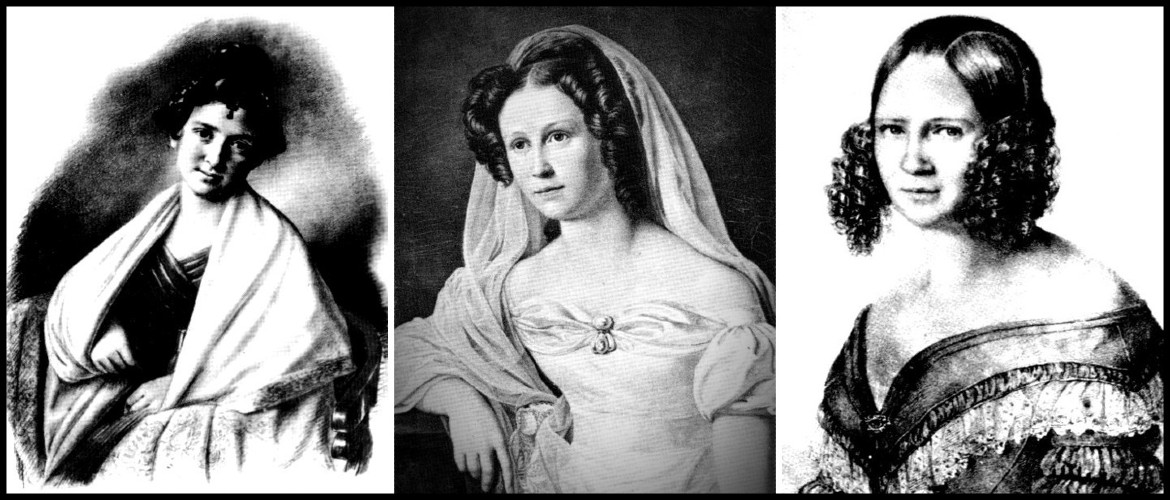
Luise (b. 1805), Rosalie (b. 1803) & Ottilie (b. 1811), three of Richard’s (b. 1813) sisters
A prime example of incest in Wagner is the passionate love between Siegmund and Siegelinde in the Ring, but—if one attends to the subtext—so is the story of Lohengrin and Elsa von Brabant. Elsa is accused of murdering her brother, who returns in the guise of a swan drawing a boat bearing the knight who will defend and marry her. Why must Elsa not know the identity of her lover—‘You must promise me one thing: never shall you ask me, nor trouble yourself to know, whence I journeyed, what my name is, or what my origin’—if not because what must be hidden is not the secret of the Grail but the fact that he is her brother?

Solveig Kringelborn (Elsa von Brabant) | Richard Wagner, Lohengrin, Baden-Baden 2006 | Klaus Florian Vogt (Lohengrin)
That is why, as Lohengrin says, their reciprocal recognition was immediate, as if it had derived from a reminiscence: ‘Though we never met, we sensed each other’. This is a variation on what Siegmund and Siegelinde say.

Klaus Florian Vogt (Lohengrin) | Richard Wagner, Lohengrin, Baden-Baden 2006 | Solveig Kringelborn (Elsa von Brabant)
With Lohengrin, it is the sensual delight of childhood that reappears: ‘I come not from darkness and suffering, I come from splendour and delight’, he tells Elsa. She, suspicious and unwilling to follow his lead, will be punished for her refusal: ‘You came to me from a place of delights and you long to return there. How am I, poor wretch, to believe that my devotion will ever satisfy you? The day will come when I am robbed of you because you regret your love for me’.

Solveig Kringelborn (Elsa von Brabant) | Richard Wagner, Lohengrin, Baden-Baden 2006 | Klaus Florian Vogt (Lohengrin)
VI. THE SUBLIME IN WAGNER
The Wagnerian hero’s incapacity to unite with the object of his desire is, as we have seen, not only a choice to renounce fulfilment in love in favor of duty to obey the Law. In fact, it is damnation that is constantly at stake, because desire and sensual pleasure are so violent that they drive the hero mad. ‘Enlightened through compassion, the innocent fool’: this line from Parsifal could well serve as Wagner’s self-definition. Consistent with the split described by Freud as ‘the most prevalent form of degradation in erotic life’, Wagner spent the first decades of his adult life with a woman he was not in love with but for whom, over many years of hardship, he felt an enduring tenderness.
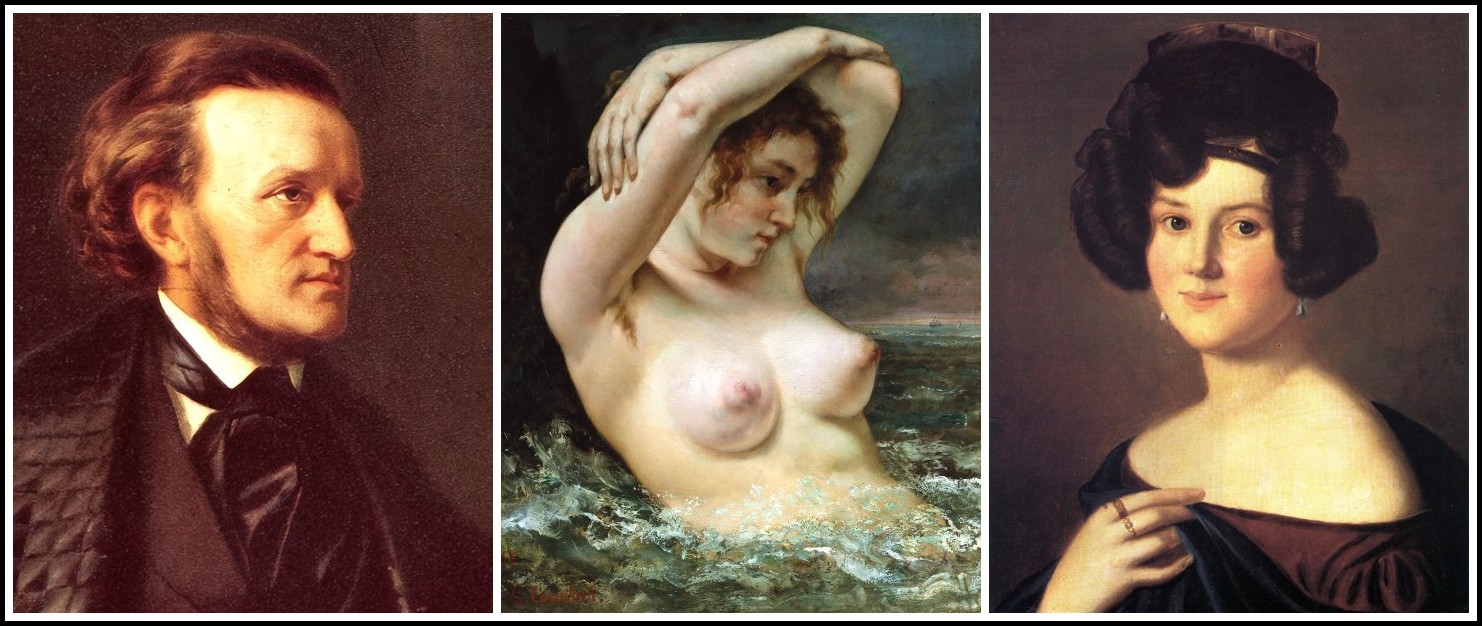
‘The most prevalent form of degradation in erotic life’
Richard Wagner | Gustave Courbet, The Woman in Waves, 1868 | Minna Wagner
We are far from the Rhinemaidens or the flower-girls in the magic garden that Klingsor created after he found himself ‘powerless to stifle the desire within him’ and ‘on himself laid dastardly hands. Wrath taught Klingsor how his deed of shameful sacrifice could give him knowledge of evil magic’. Klingsor is a pervert1 who, unable to experience jouissance himself, ‘transformed the desert into a magic garden in which bloomed women of infernal beauty; there he awaits the knights of the Grail to lure them to sinful joys and hell’s damnation’. The sensual intensity of puritanism confers on sexuality a metaphysical dimension: at every instant one risks one’s eternal life, but experiences ineffable jouissance. And at the end there will always be someone of noble nature to tell one, like Parsifal to Kundry: ‘For your salvation too I am sent, if you will but turn from desire.’
1 – In perversion, ‘the subject makes himself the instrument of the Other’s jouissance’. Jacques Lacan, Écrits: A Selection. Tr. Alan Sheridan (London: Tavistock Publications, 1977) p. 320

Katarina Dalayman (Kundry) & Jonas Kaufmann (Parsifal)| Richard Wagner, Parsifal, Metropolitan Opera 2013
Does the beauty of Wagner’s music advance us in defining the sublime and its possible link with sublimation? The Encyclopedists of the Enlightenment were keen to distinguish the sublime from the grandiloquence of a hollow idealization. They stressed that it had to come from what is natural, thereby asserting, as Freud would concerning sublimation, that the sublime, far from being an abstract quality, is linked to the psychic transformation of the subject himself. German philosophy, in contrast, inclined the sublime towards a psychology of emotions: the object is sublime and gives rise to the corresponding emotion. In his Critique of Judgement Kant writes: ‘The Sublime is what pleases immediately through its opposition to the interest of sense’. He sees this opposition as the best safeguard against Schwärmerei, the illusion that consists in believing one sees something imperceptible to the senses. The sublime, like the beautiful, addresses both reason and imagination, but transcends them to induce a feeling of ecstasy and terror simultaneously. Hegel, in his Aesthetics, situates the sublime in the second phase of the dialectic, the antithesis, and thus in the recognition of the negative and the distance that separates absolute Geist from particular existences. The sublime corresponds to that moment when the idea, in manifesting itself, annihilates the sensible medium that expresses it.
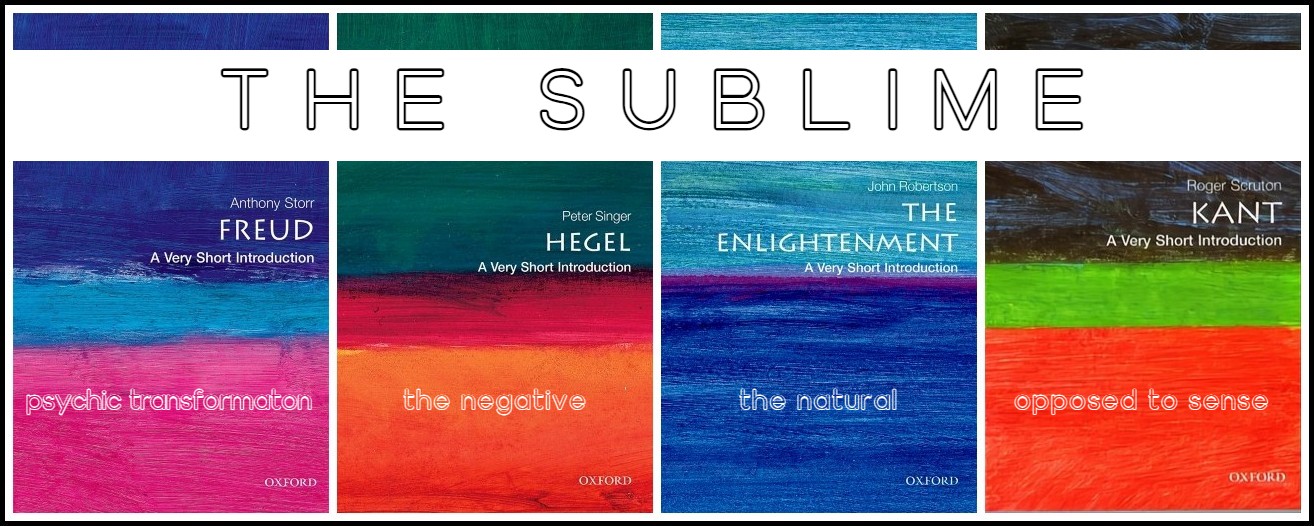
Sublimation in Freud; the sublime in Hegel, the Enlightenment & Kant
Nietzsche: ‘Wagner became the heir of Hegel. Music as “idea”. It was not with his music that Wagner conquered young men, it was with the “idea”—it is the enigmatic character of his art, its playing hide-and-seek behind a hundred symbols, its polychromy of the ideal that leads and lures these youths to Wagner; it is Wagner’s genius for shaping clouds, his whirling, hurling, and twirling through the air, his everywhere and nowhere—the very same means by which Hegel formerly lured them.’ Note that Nietzsche does not accuse Wagner of being abstract—quite the opposite, since he writes, ‘the great symbols approach from foggy distances to resound in his art with muted thunder’.2
1 – Friedrich Nietzsche, The Case of Wagner, in his The Birth of Tragedy and The Case of Wagner, tr. Walter Kaufmann (New York: Vintage Books, 1967) p. 178
2 – Ibid.
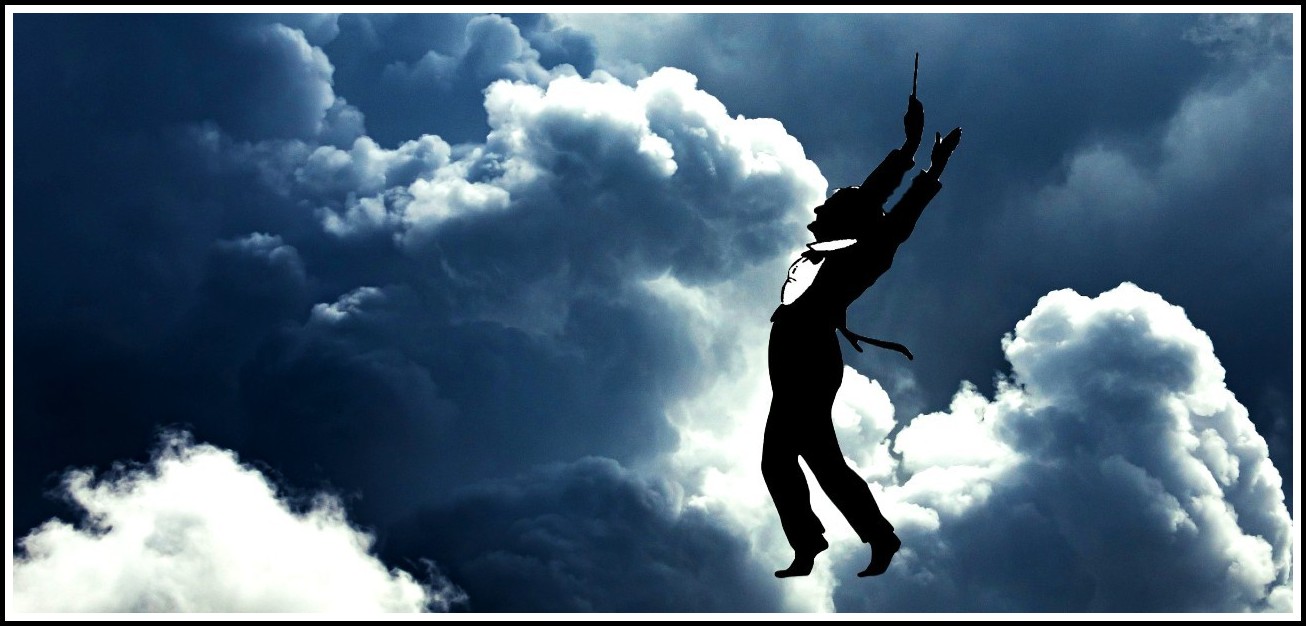
‘Wagner’s genius for shaping clouds, his whirling, hurling, and twirling through the air, his everywhere and nowhere’ (Nietzsche)
In fact, what is most striking in Wagner is his sub-rational certitude, which he transmits in his music. It comes across in an experience he recalls in his autobiography: ‘The mysterious joy I felt in hearing an orchestra play quite close to me still remains one of my most pleasant memories. The mere tuning up of the instruments put me in a state of mystic excitement; even the striking of fifths on the violin seemed to me like a greeting from the spirit world—which, I may mention incidentally, had a very real meaning for me. When I was still almost a baby, the sound of these fifths, which has always excited me, was closely associated in my mind with ghosts and spirits.’ One can of course be surprised at the little child’s fascination with the sounds of an orchestra tuning up—sounds so far from harmony and melody. Wagner himself disregarded melody in his later operas, Parsifal in particular, and Nietzsche reproached him for it: ‘To speak in the language of the master: infinity, but without melody. Melody is immoral. The lack of melody even sanctifies.’1
1 – Friedrich Nietzsche, The Case of Wagner, in his The Birth of Tragedy and The Case of Wagner, tr. Walter Kaufmann (New York: Vintage Books, 1967) pp. 167-68

Richard Wagner, Parsifal, Metropolitan Opera 2013
VII. CONCLUSION
The Wagnerian sublime does not lie in considerations of sinners’ redemption, but in the capacity to take the physical certitude of jouissance to the level of a metaphysical experience, an artistic excitation that borders on the mystical (which, unfortunately in Wagner, is sometimes appropriated by religion). Wagnerian sublimation consists in the restlessness of the musical tension that diverts the drive forces while preserving their intensity, a jouissance in which we can participate thanks to the existence of the operas, works that are the outcome of Wagner’s intrapsychic processes.

Jeanne-Michèle Charbonnet (Isolde) & Clifton Forbis (Tristan) | Richard Wagner, Tristan and Isolde, Grand Théâtre de Genève 2005
SOPHIE DE MIJOLLA-MELLOR: THREE BOOKS
CLICK ON THE IMAGE TO GO TO A DESCRIPTION OF THE BOOK
MARA, MARIETTA: A LOVE STORY IN 77 BEDROOMS – READ THE FIRST CHAPTER
A literary novel by Richard Jonathan
RICHARD JONATHAN, MARA, MARIETTA: A LOVE STORY IN 77 BEDROOMS – READ THE FIRST CHAPTER
AMAZON & APPLE BOOKS
RICHARD JONATHAN, ‘MARA, MARIETTA: A LOVE STORY IN 77 BEDROOMS’ | AMAZON PAPERBACK OR KINDLE
RICHARD JONATHAN, ‘MARA, MARIETTA: A LOVE STORY IN 77 BEDROOMS’ | APPLE iBOOK
MARA, MARIETTA: A LOVE STORY IN 77 BEDROOMS
A literary novel by Richard Jonathan
RELATED POSTS IN THE MARA MARIETTA CULTURE BLOG
CLICK ON THE IMAGE TO GO TO THE CORRESPONDING PAGE
By Richard Jonathan | © Mara Marietta Culture Blog, 2023 | All rights reserved
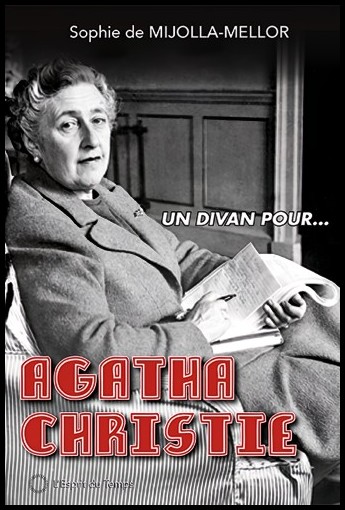
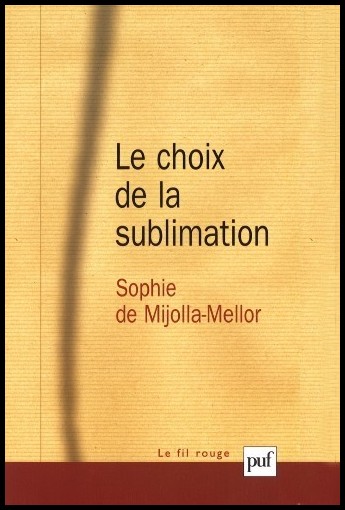
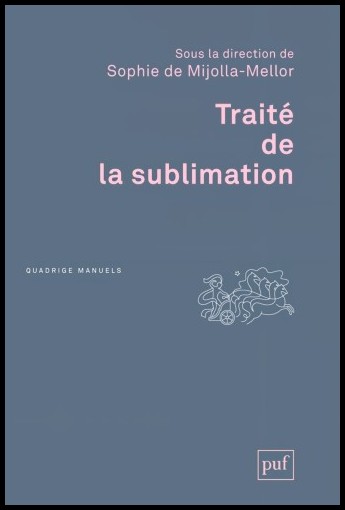
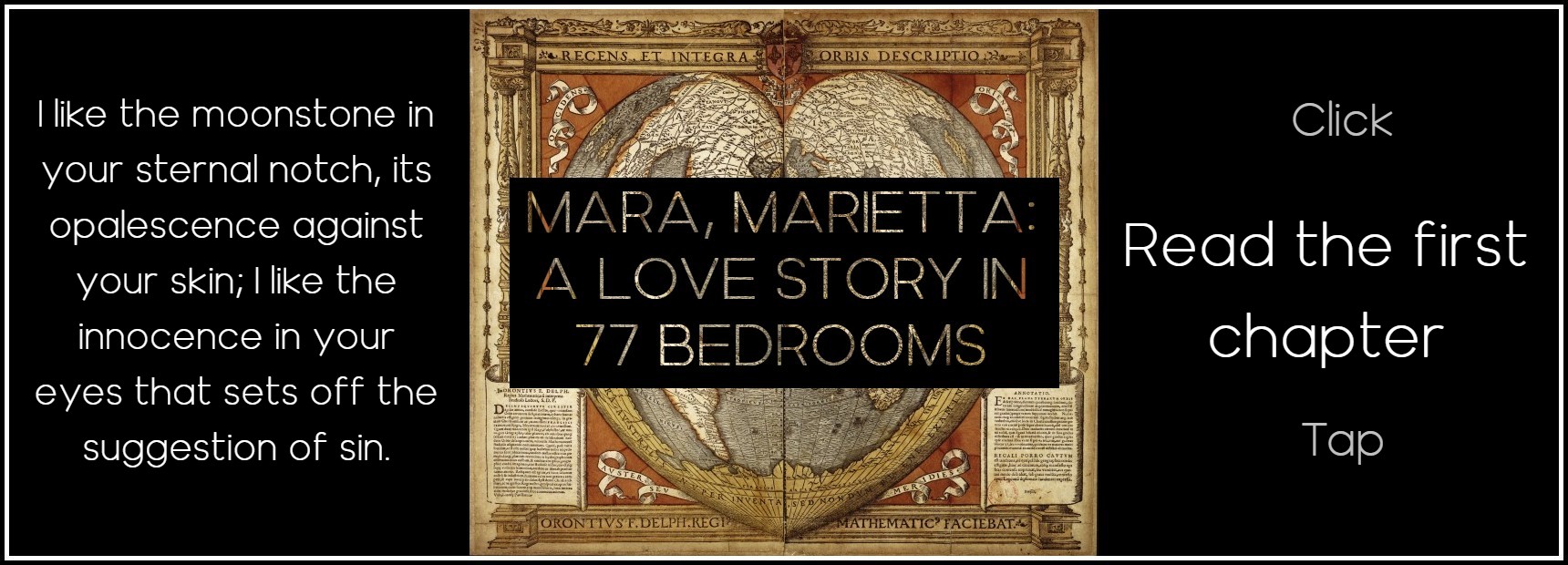
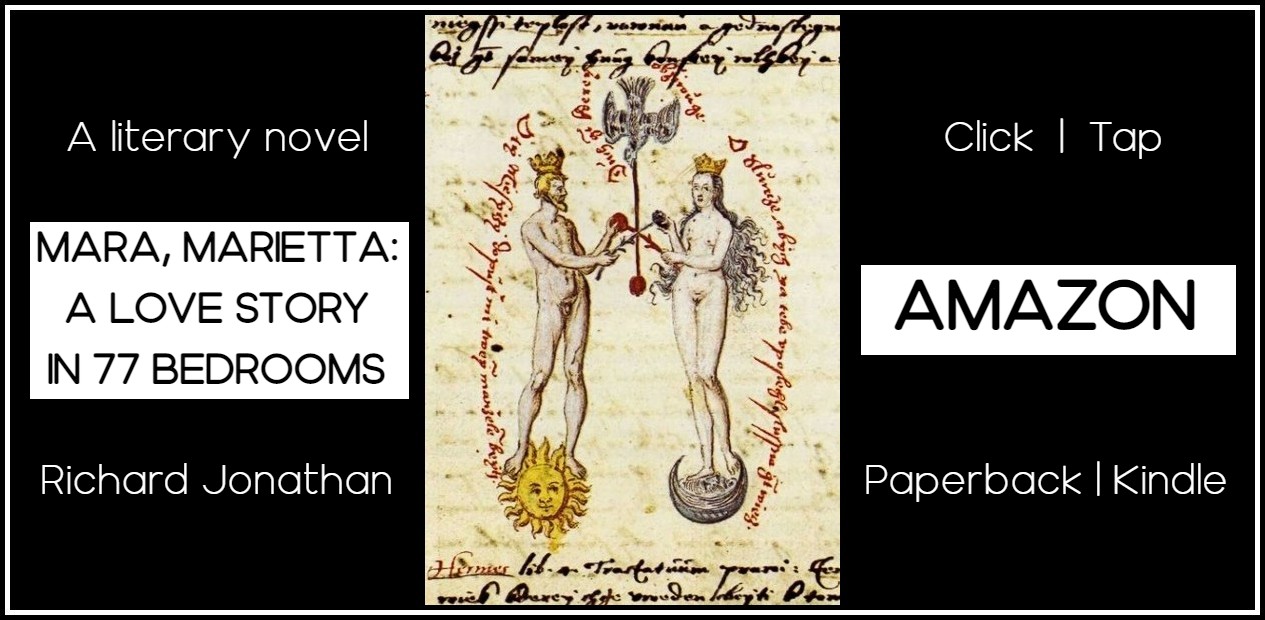



Comments